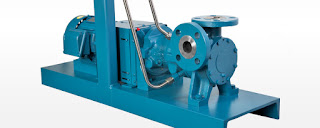- Contact Us
- Call Us
- Menu

Most of us are familiar with centrifugal pumps and their generally understandable operating design. A regenerative turbine pump is significantly different in the way in which liquid moves through the impeller section, enabling this pump type to prove advantageous in a number of industrial applications.
A centrifugal impeller basically traps some liquid at the inlet and rapidly slings through the discharge port. The liquid velocity is increased by the impeller and manifests as outlet pressure. The key distinction here is that the liquid enters and exits the impeller only one time. A regenerative turbine pump has an impeller with a comparatively larger number of vanes, also of a different shape. This shape imparts a circulatory movement of the liquid from the vanes to the casing, and back to the vanes. Each return to the vane section increases fluid velocity, which can be converted to increased pressure. As the impeller rotates, liquid enters, leaves, then re-enters the vane section many times. This process is called regeneration. The impact of this design is a pump that can deliver substantially greater pressure than a centrifugal pump with the same impeller diameter and rotational speed.
A regenerative turbine pump is capable of pumping fluids with up to forty percent entrained gases without damage from cavitation or any performance loss. Fluid conditions with even low levels of entrained gases would likely produce a substantial loss of performance in a centrifugal pump, evidenced by fluctuating discharge pressure and excessive wear and vibration. Where cavitation is a concern, the regenerative turbine pump holds the advantage over the centrifugal. Applications with low flow and high head requirements will also be better serviced by a regenerative turbine pump.